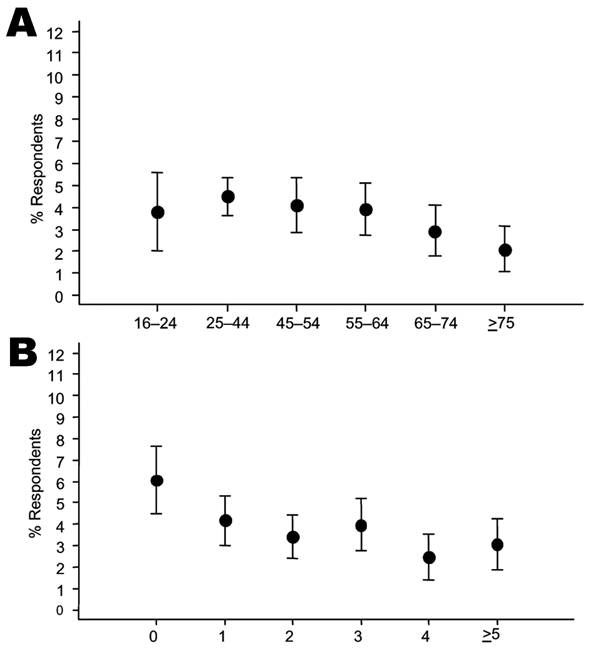Volume 12, Number 10—October 2006
Research
Antimicrobial Drugs in the Home, United Kingdom
Figure 2

Figure 2. Percentage of respondents with a leftover antimicrobial drug (all antimicrobial drugs, i.e., antibacterial plus antifungal drugs) by A) age (y) of respondent (p = 0.01, by test for trend) and B) no. of attitude questions answered incorrectly (p = 0.002, by test for trend). Error bars show 95% confidence intervals.
Page created: November 09, 2011
Page updated: November 09, 2011
Page reviewed: November 09, 2011
The conclusions, findings, and opinions expressed by authors contributing to this journal do not necessarily reflect the official position of the U.S. Department of Health and Human Services, the Public Health Service, the Centers for Disease Control and Prevention, or the authors' affiliated institutions. Use of trade names is for identification only and does not imply endorsement by any of the groups named above.